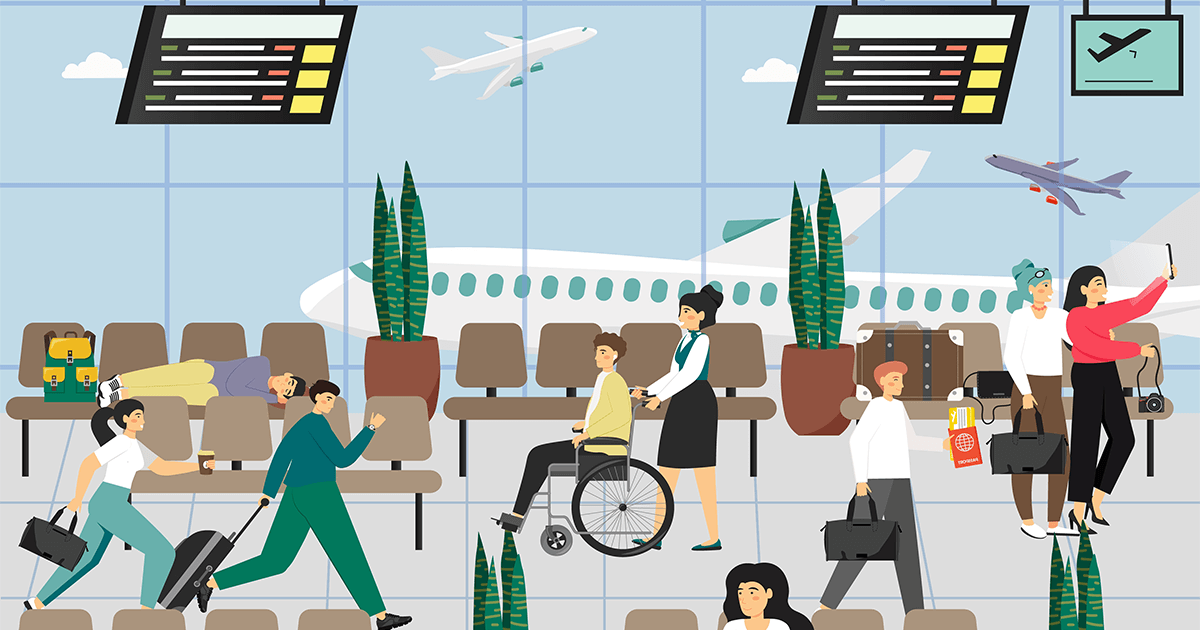Need Help?
Need Help?

Mobility Scooters are battery or electric powered devices that can assist those with limited mobility. By providing independent and convenient transport, these mobility aids have made travelling much easier for mobility impaired individuals.
That being said, plane travel can still be a head-scratcher for passengers who intend to bring their mobility scooters on board. With the many air safety regulations and policies, you may be wondering if mobility scooters are even allowed on flights.
Fret not! Whether you’re a frequent flyer or planning a special trip, reading this quick guide will answer your queries about travelling with your mobility scooter. Plus if you’re still in the market for a travel safe scooter, you could even learn a thing or two about the best mobility scooters for air travel.
The short answer: Yes!
Most airlines allow you to check mobility scooters on planes, and that too without additional baggage costs. Since they can be an essential transport equipment for people with various disabilities or elderly individuals, airlines are generally very accommodating in this regard.
Of course, this comes with a list of conditions and procedures that must be followed for the safety of the scooter users and other passengers.
Mobility scooters cannot be stored in overhead cabins due to their size and weight. Instead, they must be transported as checked baggage. In most likelihood, your mobility scooter will be checked in and managed by airline staff once you arrive at the airline check in desk.
If you intend to stay on the scooter until boarding the plane, you will need to communicate your preference to the staff and they can gate-check the mobility scooter for you.
There are some detachable accessories from the mobility scooter that you may have to take onboard the cabin with you. To ensure smooth handling, it is better to notify the airline in advance about the mobility scooter so they can make necessary arrangements and provide any specific instructions related to travelling with your scooter.
Airlines have different sets of safety regulations regarding mobility equipment such as scooters and electric wheelchairs. Generally, the size and weight requirements are similar for domestic and international travel, but with international flights you may have to go through more formal paperwork and safety regulations. It is important to check with your chosen airline well in advance so you can meet their weight, size and documentation requirements.
Consider some popular airlines in Australia and their policies regarding mobility aids:
Qantas allows passengers to travel with mobility scooters as long as they comply with size and battery limitations:
Qantas requires passengers to inform them at least 48 hours before departure and provide details about the scooter and its battery type.
Virgin Australia mobility assistance policy accommodates passengers with electric mobility scooters, requiring advance notice to ensure proper arrangements. Passengers must provide information about the dimensions and battery in advance by filling in the Specific Assistance section of the passenger details page.
JetStar permits mobility scooters as checked baggage and requests passengers to contact their Special Assistance team before the flight. JetStar requires clear labelling of the scooter and its battery details to avoid any complications.
Qatar Airways recommends notifying their Special Assistance team through the ‘Manage Booking’ section about mobility aid batteries, size and weight at time of booking and 48 hours before the flight.
Emirates allows mobility scooters on their flights and expects passengers to inform the airline at the time of booking or at least 48 hours before departure. You must let them know the battery type, size and weight of the mobility scooter for them to make check-in arrangements.
Batteries are possibly the most important consideration for a mobility scooter when intending to travel with one. Airlines have different rules for the types of batteries allowed on board a plane and provide instructions on how to pack them so they are approved for travel.
Some airlines [i.e. Qatar Airways, Emirates and Singapore Airlines] also allow spillable batteries aboard the aircraft. Such batteries require spill resistant caps and if fitted to the mobility scooter, require that the scooter be in the upright position at all times.
If you’re clear about mobility scooter and battery travel policies, you may be wondering how to actually transport your scooter on the plane. Consider below steps to follow:
The best type of travel mobility scooters will be portable, foldable and easily disassembled when required. Such mobility scooter models will be lightweight and compact, so they can easily be carried or fit into storage areas.
The Solax range at Rocket Mobility has great folding mobility scooters for air travel. The Solax Charge is an automatic folding scooter that uses lithium batteries and weighs under 32kg, ideal for travelling on airplanes. The Transformer Comfort Pro steps up a level by folding and fitting into a Solax hard travel suitcase, making it easy to carry as luggage. And if you’re looking for the most lightweight of travel scooters for your journey, look no further than the Maleta Carbon Fibre, which weighs just over 21 kg and has automatic folding.
Mobility scooters are well-accommodated by airlines and with the many types of mobility scooters now available on the market, air travel has never been easier. By familiarising yourself with conditions for taking mobility scooters on flights, you can be more prepared to travel with your scooter, avoiding potential delays at the airport and reducing the chance of damage.
If you’re on the hunt for the right mobility scooter for travel, reach out to us with your concerns and we can take you through our most travel friendly mobility scooter options. That way you can focus more on the fun part of your trip and leave the difficult part to us.